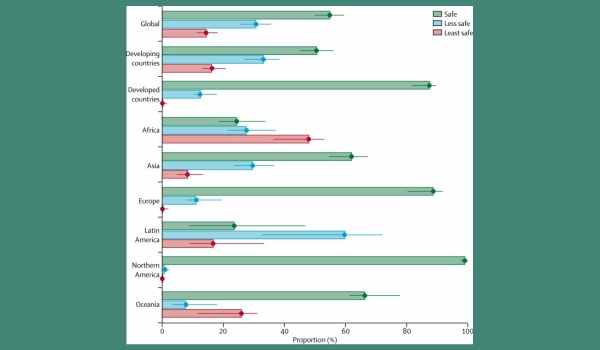
Key facts
Between 2010–2014:
- On average, 56 million induced (safe and unsafe) abortions occurred worldwide each year.
- There were 35 induced abortions per 1000 women aged between 15–44 years.
- 25% of all pregnancies ended in an induced abortion.
- The rate of abortions was higher in developing regions than in developed regions.
Around 25 million unsafe abortions were estimated to have taken place worldwide each year, almost all in developing countries.
- The risk of dying from an unsafe abortion was the highest in Africa.
- Around 7 million women are admitted to hospitals every year in developing countries, as a result of unsafe abortion.
- The annual cost of treating major complications from unsafe abortion is estimated at US$ 553 million.
- Safe abortion must be provided or supported by a trained person using WHO recommended methods appropriate for the pregnancy duration.
- Almost every abortion death and disability could be prevented through sexuality education, use of effective contraception, provision of safe, legal induced abortion, and timely care for complications.
- In developed regions, it is estimated that 30 women die for every 100,000 unsafe abortions. That number rises to 220 deaths per 100,000 unsafe abortions in developing regions and 520 deaths per 100,000 unsafe abortions in sub-Saharan Africa.
- Mortality from unsafe abortion disproportionately affects women in Africa. While the continent accounts for 29% of all unsafe abortions, it sees 62% of unsafe abortion-related deaths.
WHO provides global technical and policy guidance on the use of contraception to prevent unintended pregnancy, safe abortion, and treatment of complications from unsafe abortion. In 2012, WHO published updated technical and policy guidance on safe abortion. WHO recommendations for safe abortion can be found in the following publications:
- Safe abortion: technical and policy guidance for health systems (2012)
- Clinical practice handbook for safe abortion (2014)
- Health worker roles in providing safe abortion care and post-abortion contraception (2015)
An interactive online database containing comprehensive information on the abortion laws, policies, health standards and guidelines for all countries is available at http://www.srhr.org/abortion-policies.
Technical support to countries
Upon request, WHO provides technical support to countries to adapt sexual and reproductive health guidelines to specific contexts and strengthen national policies and programmes related to contraception and safe abortion care.
SOURCES: WHO Media Centre, updated September 2017 ; Infographic : Ganatra B, et al. Lancet 2017 http://dx.doi.org/10.1016/S0140-6736(17)31794-4



